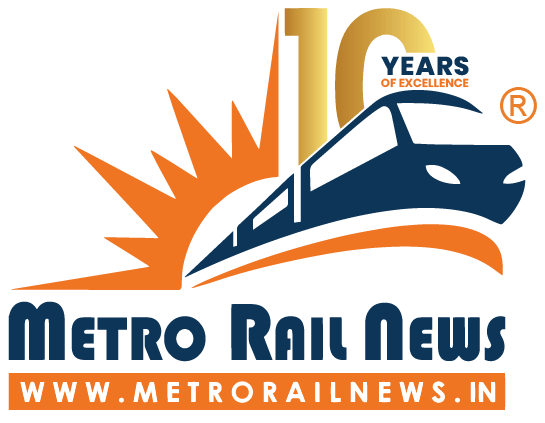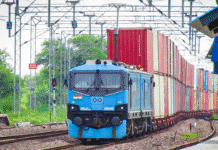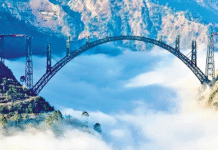NEW DELHI (Metro Rail News): A passenger information system (PIS) is a cutting-edge technology that offers tailored solutions for various traffic management and transportation systems. Furthermore, it enables consumers to be well-informed and use transportation networks in a more structured, intelligent, and safe manner. PIS intends to improve traffic quality by reducing congestion. This technology gives the user prior information regarding their travel, such as real-time bus/train running information, seat availability and traffic, and improves their safety and comfort.
Traditional information systems, especially transportation, are being pushed to their limits in today’s fast-paced technology environment. Today’s public transportation systems rely on passenger information systems to offer real-time service and fleet status information. A properly working passenger information system is a valuable asset to any public transportation service since it provides a plethora of data that benefits not only commuters but also transit administrators, planners, operators, and supervisors. These technologies’ data is essential in developing a safer, more dependable, and seamless transit system that benefits everyone.
Passenger Information System
The passenger information system (also known as the passenger information display system) is a digital information system that permits real-time observation, surveillance, and processability of passenger data. PIS can be implemented in a transportation company or operated via web-based browser applications or a specialised intelligent phone app. The Passenger Information System (PIS) can estimate arrival and departure times and assess delays and disruptions. The passenger information system is used in a variety of ways at various levels, as under:
PIS at a bus stop or train station
- It can be used to provide passengers with information and general advice
- Display departure and arrival times
- It can be used to display the following vehicle’s transport route and destination
- It can be used to inform the waiting passengers about the expected arrival time of the scheduled bus or train.
PIS inside a bus or train
- It can display advanced information like train numbers, number of stations covered, etc.
- Used to display next or previous stops/stations
- Information related to Wi-Fi, catering services inside the train, emergency contact numbers, etc.
- Comparison between the scheduled arrival/departure time and the delayed time.
Key Benefits
- Enhance Customer Satisfaction & Reduce Complaints: According to the most recent NRPS (National Rail Passenger Survey), train delays are one of the most prevalent complaints that TOGs or train operating groups receive. Several companies, including different forms of transportation, have reported a drop in complaints since implementing PIS services. Public transit systems can reduce passengers’ perceived and actual wait times by providing real-time departure and arrival information. Passengers can better plan their time if they discover a train is running late. They may, for example, depart later, tell work or the person with whom they’re meeting that they’ll be late, or make alternate travel arrangements. Passengers would rather know in advance that their train will be late than wait and wonder why it hasn’t come yet. It allows people to be more active with their time and make superior use of their time.
- Better service usage: Passenger information systems can make travel more convenient and seamless. This could encourage many more individuals, whether first-time or repeat travellers, to use public transportation. For example, suppose a passenger obtains outstanding service from a travel firm due to quick service and a passenger information system. In that case, they are more likely to recommend the company to others. As a result, new business will increase through word of mouth. However, the global market for passenger information systems saw a steep decline due to the COVID-19 pandemic.
- Improve planning schedule, Update primitive approach: The days of depending entirely on manually printed paper timetables or even the display boards in the station’s main entrance to advise passengers of the next train’s arrival time are long gone. These schedules were similarly predicated on the assumption that there would be no delays and that there would always be an acceptable amount of passengers on board. Passengers can view a real-time version of their train schedule using passenger information systems, allowing them to make immediate changes and better manage their time.
- Awareness regarding the arrival time of trains/buses: Some public transportation systems are infamous for being late. This is especially undesirable for passengers who may be told about the delayed arrival of their bus/train and spend their time in a cafe or store instead of waiting at the stop/platform. Accurate real-time information allows tourists to plan their trips better and reduce wait times, resulting in a more enjoyable travel experience. Today, ridesharing companies such as Lyft and Uber are profoundly changing the transportation industry by creating intense competition.
They’ve already outsmarted the taxi industry and are attempting to supplant public transportation. Although the train and bus are quite distinct types of transportation, they both face competition from similar sources. Some passengers like the comfort, dependability, and availability these ridesharing companies provide to their consumers. To keep up, government public transit agencies must upgrade their transportation networks. In addition, their passengers must act appropriately and be aware of potential delays. PIS systems can assist these organisations in improving their services.
Integrated Passenger Information System
The Integrated Passenger Information System (IPIS) is a computer-based single control and data entry system that provides audio and visual information to passengers via a PC-based announcement system and various Train Indicator Boards that span the entire station and have the capability of networking and operating from a centralised location. As a result, this system is more convenient for both the operator and the passengers.
Passengers get all train-related information via the Passenger Information System (PIS), which includes the Interactive Voice Response System (IVRS), Pre-recorded Announcement and Auto Announcement System, Train information display, Coach navigation display, and so on.
Components / System Architecture
The IPIS consists of the following units/subsystems :
- Central Data Controller (CDC)
- Platform Data Controller (PDC)
- PC-based Announcement System
- Platform Display Board (PDB)
- Multi-line Display Board (MLDB)
- At-a-glance display Board (AGDB)
- Coach Guidance Display Board (CGDB)
- LED/LCD Display
Central Data Controller
The CDC Rack is often mounted at the railway station’s enquiry in a 19″ 42U rack with correct earthing. It is made up of two CPUs (PCs) that are linked by a Central Data Switch (CDS) for data synchronisation. A Keyboard-Video-Mouse (KVM) switch connects one 17″ (minimum) colour LCD/TFT display. An audio/video selection device with a speaker and microphone is provided for live announcements. The properly isolated audio output provided by the A/V selection device can be linked to the audio amplifier of the public address system. It also supplies video signals for the PIS’s LED/LCD. Both CPUs are pre-loaded with the required software, having options for data entry for train no., timetable of trains, and PF. No., and expected arrival/departure time, among other things.
The database, such as train information, text messages, pictures, etc., can be uploaded from the CDC to the display board(s) via the display controller over the same communication channel used for train arrival/departure display boards.
Central Data Switch
The CDS is a Layer-3 Ethernet Switch that provides Ethernet connectivity for data transfer between the station’s CPUs and multiline display boards, platform display boards, and data controllers. It also links the IPIS system to the railway network and NTES port access.
Platform Data Controller
Platform Data Controllers control Platform and Coach Guidance Display Boards. The Platform Data Controller is built around a 32-bit microprocessor. The PDC routes data/instructions from the Central Data Controller to the downstream display devices and health/diagnostic data from the display devices to the CDC. Depending on the site requirements, the PDC unit receives data from the CDC via an optical fibre connection or copper Ethernet port and distributes it to the attached PFD or CGD. A single PDC can manage two platforms.
PC-Based Announcement System
- The system is Windows 7 or higher GUI based, wholly designed to announce all types of passenger-carrying trains via the crucial board.
- Fixed audio messages are recorded in a soundproof studio with a minimum sample resolution of 16 bits.
- Recording and playing back of new messages are only accessible from CDC utilising the microphone and speaker provided by CDC and the Windows standard sound recording tool.
- There are three main types of announcements. one for a train coming on the platform, one for a train arriving and one for a train departing from the platform in English, Hindi, and a regional language. If the Platform No./Train No. Changes, the announcement can be updated.
Display Boards
Platform Display Board
The Platform Display Board shows the train schedule for that platform’s arrival/departure, including the train number, name, and time of arrival/departure. PDB should be hung from the platform’s roof in appropriate locations on platforms/foot-over bridges.
Multi-line Display Board
The MLDB displays the train number, name, arrival/departure time, and platform number. In addition, it displays information from numerous trains at the same time. Major stations should have two separate display boards for arrival and departure, but minor wayside stations can have a single display board that displays arrival and departure information. The multiline display boards should be positioned at the station’s main entrance/concourse and platform display boards at appropriate locations on platforms/foot-over bridges.
At-A-Glance Display Board
The information about the train arriving/departing from that platform and the coach composition is displayed by AGDB. AGDB is generally installed at the main entrance, footbridge, or station.
Coach Guidance Display Board
For passenger guidance, CGDB displays the Train Number and Coach Number of the train scheduled for arrival/departure from that platform. When there is no train on the platform, the screen displays either the station code or the zonal railway code, or it can be left blank. Both sides of the coach guide display boards must have displays.
Geographic Information System
The Indian Railways owns a considerable number of assets, including land, which must be adequately monitored, managed, and maintained. As railway operations have broad geographic coverage across the country, GIS mapping of various assets on Indian Railways can be utilized to enhance asset management.
All Indian Railways assets will be mapped, and the data will be used to build the Indian Railways’ GIS webpage. GPS-based mapping of Indian Railways assets, including land assets, is currently underway on a GIS platform. A Memorandum of Understanding (MOU) has been signed with the Centre for Railway Information Systems (CRIS) for that purpose, and CRIS is building this Application. Land plans of Indian Railways will be available for viewing superimposed on various types of Maps/Images in this Application. ISRO Bhuvan Platform satellite imagery/maps are being used for this. A Memorandum of Understanding (MOU) has been signed between the Ministry of Railways and ISRO to collaborate in several areas.
Planning for enhancement/augmentation of various facilities such as new lines, doubling/multiple lines, traffic facilities, and others may well be done after creating a GIS portal. It would also assist in identifying the growth of new encroachments around a station and other regions by comparing Satellite Images from different times, which are updated at regular intervals by ISRO.
GIS – Definition
A Geographic Information System (GIS) is a system that connects elements such as buildings, trains, roads, and land parcels to the information to which they are related. GIS enables us to explore, analyse, query, interpret, and visualise data in various ways, revealing correlations, patterns, and trends through maps, globes, reports, and charts. It can also be used to plan and monitor projects by employing drone recordings at appropriate intervals and effective disaster management to provide prompt assistance/support during accidents/natural calamities.
The Various Components
- Infrastructure Development
- Rail Yard Management
- Safety & Security Management
- Land Management
- Environment Management
- Disaster Management
- Engineering, Drawing & Records Library
- Asset Management
Asset Management
A comprehensive GIS-based railway assets database is expected to give vital information throughout the asset’s life cycle, effectively managing these assets, maximising throughput, assuring safety, and avoiding disturbance/delays to traffic. With this in mind, Indian Railways is developing a GIS system to support several types of railway asset management, such as:
(i) Track related assets, including bridges, tunnels, level crossing, etc.
(ii) Communication and Signalling networks
(iii) Electric Power Distribution networks
(iv) Rail Yards and other Campus facilities
(v) Land management
(vi) Project planning, design and implementation monitoring
(vii) Production Units & Workshops
Disaster Management
Time and input data availability are necessary for disaster management and rescue planning and implementation. Disaster Management System based on GIS: –
(i) Helps in location of accident site and provides its accessibility information.
(ii) Helps in finding out the optimum routes between resource locations and the accident site etc.
(iii) Provides simple means of alarming the resources to initiate rescue operations.
(iv) Provides continuous monitoring of rescue activities and facilitates dynamic planning of strategies.
(v) Can also be used to build & update database of critical facilities such as hospitals, fire stations, police stations, etc
(vi) Can integrate data from various sources into a common platform to make it readily accessible to various stakeholders.
Passenger Information & Facilitation
GIS-based applications will serve Indian Railways passengers in a number of ways, like live train movement information and 3D mapping of all stations, allowing passengers to search for, visualise, and navigate to desired areas on the stations.
Decision Making & Planning
A Geographic Information System (GIS) and a Geospatial database of IR assets and facilities would reduce the amount of human effort required to obtain geographical information and would play an important role in improving decision-making capacity, efficiency, and long-term management of Railway assets.
Conclusion
The passenger information system is used to deliver real-time information on public transportation to passengers. These details are provided by automated vehicle positioning systems. For improved data transfer, the transportation industry has absorbed some major advancements from the telecommunications industry, such as cloud and big data technology. This adoption has made it easier for passenger information systems to perform properly and deliver reliable real-time transportation information to passengers.
The operational procedures of passenger information systems are complex, owing to the integration of many components. These components raise the overall installation cost of the passenger information system. These significant factors are expected to stifle market expansion in the near future. Furthermore, the scarcity of experienced staff to operate these systems is another notable factor that is expected to limit market expansion.






